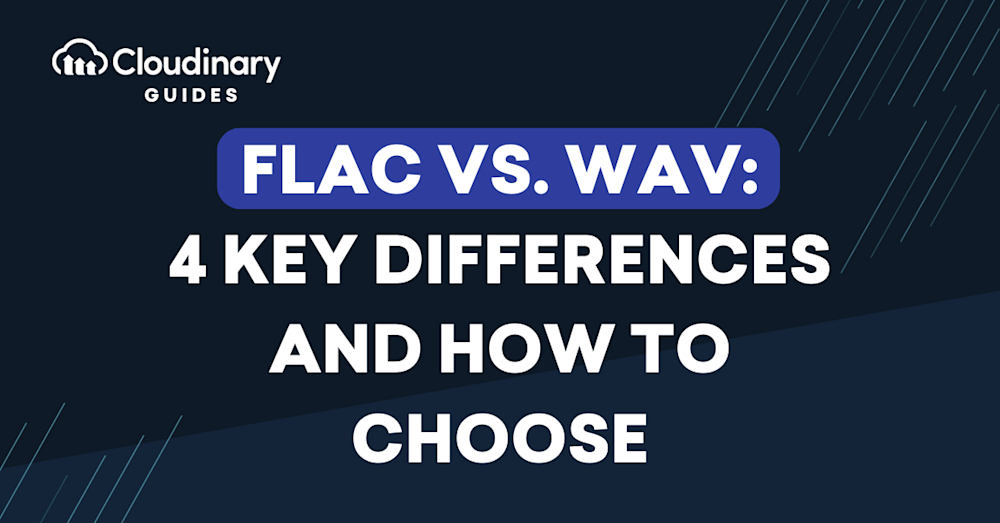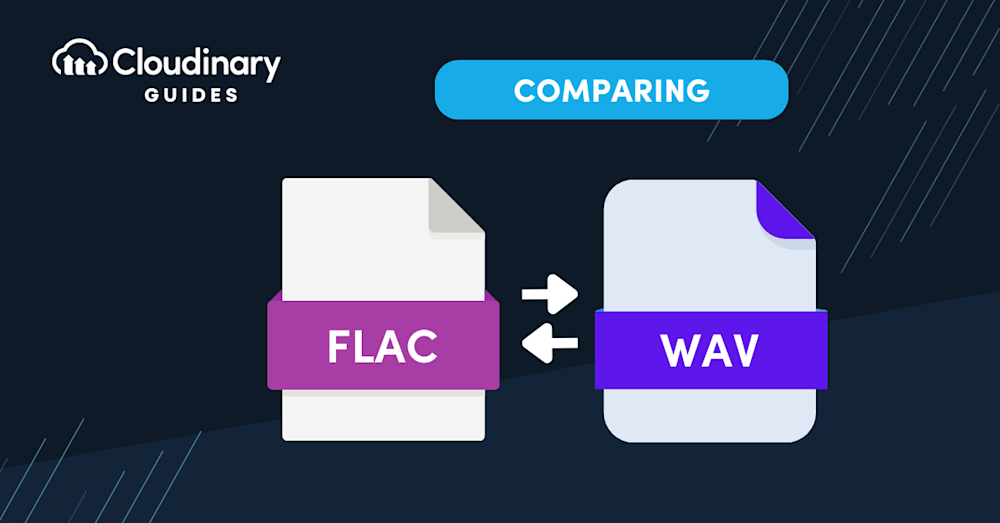What Is FLAC?
FLAC stands for Free Lossless Audio Codec. It’s a digital audio format that offers compressed lossless files, which means it can reduce the audio file’s size without losing any of its original quality.
FLAC uses a specialized algorithm to remove unnecessary bits of data from the audio file. This process reduces the file size by approximately 30-50%. When the file is played back, the removed bits are restored, ensuring the playback sounds identical to the original, uncompressed file.
Additionally, FLAC is an open-source format, meaning anyone can use it for free. It’s widely compatible, working seamlessly on most music players, including computers, smartphones, and tablets, and supports metadata tagging, which makes it ideal for organizing large music libraries. This versatility extends to its ability to compress various file formats without compromising the original sound quality.
It’s an open-source format, making it free for anyone to use. It’s also universally compatible with most music players, making it a popular choice for music enthusiasts. This format is excellent for storing high-quality audio files, particularly if you want to save some storage space.
These files can compress audio data by about 30-50% of their original size. This compression is achieved using an algorithm that removes ‘unnecessary’ bits of data. However, when the file is played back, these bits are restored, resulting in a file that sounds identical to the original, uncompressed file.
What Is WAV?
WAV, or Waveform Audio File Format, is another popular digital audio format. Unlike FLAC, WAV is a lossless and uncompressed format. This means the files are larger, but they preserve every bit of the original audio data.
WAV is purely an audio container. It lives in the RIFF framework, storing raw PCM samples that directly map to sound waves, ensuring a bit-perfect copy of the recording. There’s no visual component: its sole purpose is to capture, store, and reproduce audio data.
These files are typically used in professional settings where high-quality sound is required. It’s the standard format for many professional audio and video applications, including music and film. Because of its high quality, WAV is often the format of choice for musicians, sound engineers, and anyone who values the highest possible sound quality.
However, the downside to WAV files is their size. Because they’re uncompressed, they take up much more space than other formats. This can make them impractical for everyday use, especially if you’re limited in storage space.
This is part of a series of articles about video format.
In this article:
- FLAC vs. WAV: Key Differences
- FLAC Pros and Cons
- WAV Pros and Cons
- FLAC vs. WAV: How to Choose?
- Converting Between FLAC and WAV With Cloudinary
FLAC vs. WAV: Key Differences
1. File Size
One of the most significant differences between FLAC and WAV is the file size. FLAC files are compressed and take up less space on your device. This makes them a preferable choice if you’re looking to store a large music library without using up all your storage.
Why are FLAC files so big?
WAV files are uncompressed, meaning they take up a lot more space. However, this also means they retain all the original audio data, making them ideal if you seek the highest possible sound quality.
2. Sound Quality
FLAC files are compressed but still lossless, meaning they don’t lose any audio quality during the compression process. When played back, FLAC files sound identical to the original, uncompressed file.
However, WAV files offer the purest sound quality since they’re completely uncompressed. This makes them the preferred choice for professional musicians and sound engineers. But for the average listener, the sound quality difference between FLAC and WAV is likely to be negligible.
3. Metadata and Playback Versatility
One key advantage of FLAC is its support for metadata tagging and cover art. This capability helps you keep your music library well-organized, making it easier to search for and sort tracks. In contrast, WAV files do not support metadata as robustly, which could be a drawback for those who value organization.
FLAC files can also be played on a wide range of devices, including VLC on computers and mobile devices. WAV files, while universally compatible, lack this modern metadata support.
4. Compatibility and Support
Both FLAC and WAV are compatible with most music players. However, since FLAC is a newer format, it might not be supported by some older systems. WAV, being an older and more established format, tends to have wider compatibility, particularly with older systems.
FLAC Pros and Cons
One of the main advantages of FLAC is its lossless compression. This ensures you get high sound quality, as no audio information is lost in the compression process.
Another advantage of FLAC is its support for metadata tagging and cover art. This makes it easy to organize your music collection and find the tracks you want to listen to. Plus, FLAC files can be played on a wide range of devices and platforms, thanks to its open-source nature and widespread support.
Additionally, FLAC files can compress other audio file formats while retaining their original sound quality. This versatility makes them a reliable choice for both casual listeners and audio enthusiasts.
However, FLAC also has its downsides. The main one is that FLAC files are significantly larger than their lossy counterparts. This can be a problem if you have limited storage space or if you want to stream music over the internet. Also, while FLAC is supported by many devices and platforms, it’s not as universally supported as other formats, such as MP3.
One of the benefits of the FLAC format is its resilience to errors. Unlike some other audio codecs where a single error can disrupt the entire stream, FLAC ensures that an error only affects one frame. This mitigates the potential damage, as an affected frame only represents a tiny fraction of the whole file’s data. This ensures file integrity and safeguards against mass data loss.
WAV Pros and Cons
One of the main advantages of WAV is its simplicity. WAV files are easy to edit and manipulate, making them popular for music producers and sound engineers. Additionally, WAV is a universally supported format, meaning it can be played on virtually any device or platform.
If you need to convert FLAC files into more universally accepted formats like MP3, tools like Audacity offer free and easy options. Audacity allows you to open, edit, and export FLAC files into MP3, giving you control over quality and settings. For those who prefer cloud-based solutions, Cloudinary provides seamless on-the-fly conversions with URL delivery.
However, WAV also has its downsides. The main one is that WAV files are even larger than FLAC files, making them impractical for everyday use if you have limited storage space. Also, unlike FLAC, WAV doesn’t support metadata tagging or cover art.
FLAC vs. WAV: How to Choose?
If sound quality is your top priority and you have enough storage space, either format will serve you well. However, FLAC has the edge regarding metadata support and slightly smaller file sizes, making it more convenient for managing your music collection.
On the other hand, if you’re a musician or sound engineer who needs to edit and manipulate audio files, WAV might be the better choice due to its simplicity and ease of editing. Also, if universal compatibility is important to you, WAV is the safer bet, as it’s supported by virtually any device or platform.
Convert FLAC Files Easily, No Coding Skills RequiredTo convert FLAC files, you need to find software and then check if it’s compatible with your computer—a hassle. But there’s a better way: Upload your audio files to Cloudinary, and Cloudinary will convert the audio for you, delivering it via a URL. You only need to specify one of the supported audio formats.-> Create your Cloudinary Account now — it’s FREE!
Converting Between FLAC and WAV With Cloudinary
Knowing when to employ FLAC or WAV can make all the difference in your website’s performance and user experience. But what if you need to convert one format to the other? Cloudinary simplifies media management by securing, delivering, and transforming all your media assets on the fly within one unified platform.
Let’s dive in and explore how you can use Cloudinary to convert between FLAC and WAV.
- Sign Up or Log In: If you’re new to Cloudinary, create an account. For existing users, just log in. This step is straightforward and user-friendly
- Upload Your File: Once you’re in, locate the Media Library. You can upload the FLAC or WAV files you want to convert here.
- Advanced Editing: Click on the three dots over the file and choose “Advanced Editing”.
- Select the new format: In the new window choose the new format and quality of your file. Cloudinary supports different audio formats.
- Copy the URL: On the right side you will get the URL to access the new file and the different code snippets in case you are a programmer.
In summary, while converting FLAC files using software is common, the rise of cloud solutions has made the process much simpler. With services like Cloudinary, you can effortlessly convert audio files without the need for complex installations or coding skills. By uploading your files and accessing them through a URL, the conversion process becomes incredibly user-friendly.
Take advantage of this convenient option by signing up for a free Cloudinary account today and experience the ease of on-the-fly audio file conversion.



